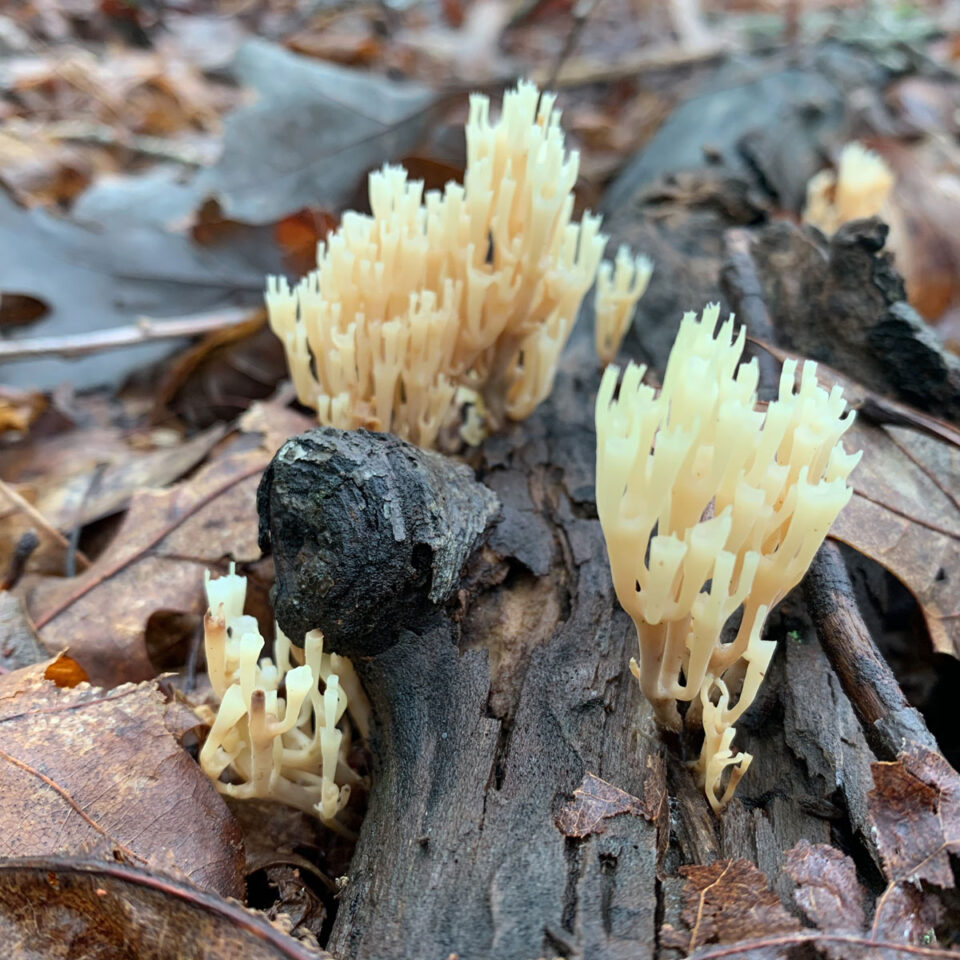I have learned a lot about this fern writing this post!
First, I thought it was called Cinnamon fern because it has these fertile fronds that don’t have leaves which turn cinnamon brown and they are all clustered as on a stick, so I thought it kind of resembled a cinnamon stick. But it’s really named just because of the cinnamon color of the spore clusters. It also does not smell or taste like cinnamon, in case you were wondering.
Second, the genus Osmunda is one of the most ancient fern genera, with fossils dating back more than 200 million years. Because cinnamon fern has undergone little or no anatomical change during this time (!) it’s sometimes called a “living fossil.”
And like many ferns it reproduces both by spores and vegetatively by rhizomes. Although fires can kill the fronds, dormant buds on the rhizome, insulated from the heat of the fire, give rise to new fronds. In many habitats, vigorous regrowth following a fire increases the area covered by cinnamon fern. (all from the book Wildflowers & Plant Communities)
Brown thrashers and veeries sometimes nest in the central “vases” of cinnamon fern clumps (the imagery of this just melts my heart!)
And, if you were wondering, the fiddleheads of cinnamon fern are edible. They are large and showy with silver-white hairs which turn rusty as the fronds uncurl.
Size: 2-5' tall Family: Osmundaceae (Royal Fern Family) Habitat: Moist areas with acidic soils and high organic content, including rocky streamsides and mountain bogs. Identifiers: Deciduous fern with erect dimorphic fronds, sterile fronds are light green, ovate to lanceolate forming a clump. Fertile fronds lack the leaflets and just have the brown spore clumps.














